There’s nothing quite like the moment a city skyline comes into view. Maybe it’s spotting the Empire State Building from the backseat of a yellow cab, or catching your first glimpse of Dubai’s Burj Khalifa sparkling in the desert sun.
At Remitly, we know these views carry more than steel and glass. Skylines are symbols of ambition, resilience, and identity. For many of us who’ve moved abroad, that view is the first “pinch me” moment when you realize: this is my new home. In this article, we’ll take you through the skylines that define the world and what makes them special.
The power of urban silhouettes
Skylines aren’t just about tall buildings; they’re the face a city shows to the world. They tell a story long before you set foot on the ground.
Skylines as cultural symbols
Think of a skyline as a city’s autograph; you know it instantly, even from far away. The Eiffel Tower scribbles Paris against the sky, while Toronto’s CN Tower plants a Canadian flag in the clouds.
For immigrants, skylines often feel like shorthand for opportunity. New York’s sharp vertical lines speak of ambition. Dubai’s futuristic peaks whisper about innovation and bold ideas. London’s mix of centuries-old towers with modern glass skyscrapers says: We’re proud of our past, but we’re not afraid of the future. Each skyline has its own personality, just like the people who live beneath it.
Psychological and economic impact
Skylines also shape how we experience a city. For residents, spotting familiar towers at the end of a long commute feels like a warm welcome home. For newcomers, it’s often the first spark of connection: This is where my story starts.
There’s also a very practical side. A recognizable skyline can make a city unforgettable to investors and tourists. It acts like a global business card, drawing in opportunities and boosting a city’s reputation. That’s why cities compete to build taller, greener, or more dramatic skylines.
The evolution of skylines through history
To understand modern skylines, it helps to know where they began.
Skylines from past to present
Over the centuries, skylines have told very different stories about faith, power, resilience, and ambition.
- Ancient skylines: Long before skyscrapers, cities were defined by temples, churches, and palaces. Rome’s Colosseum, Athens’ Acropolis, and Istanbul’s Hagia Sophia shaped the horizon. These early skylines weren’t about glass and steel; they were about identity and power.
- Industrial revolution to skyscraper age: The late 19th century changed everything. With steel frames and elevators, cities like Chicago and New York suddenly had the tools to grow vertically. Skylines became symbols of innovation, capturing the world’s imagination.
- Post-war skylines and globalization: By the mid-20th century, skylines represented recovery and ambition. Cities rebuilt after World War II with bold towers, while globalization sparked a wave of skyscraper cities across Asia, the Middle East, and beyond.
Skylines in popular culture
Skylines have become cultural icons that show up everywhere, from blockbuster movies to album covers.
- Movies and TV: New York dominates pop culture, appearing in Friends, Spider-Man, and King Kong. Dubai’s Burj Khalifa was the stage for Tom Cruise’s stunts in Mission: Impossible. London’s skyline, especially Big Ben and Tower Bridge, shows up in everything from Harry Potter to James Bond.
- Music and art: Jay-Z and Alicia Keys’ Empire State of Mind practically turned New York’s skyline into a character itself. Toronto’s CN Tower appears on Drake’s album Views. Photographers and street artists worldwide use skylines to capture themes of identity.
- Games and advertising: Video games like Grand Theft Auto V and Assassin’s Creed recreate skylines to immerse players in city life. Travel ads, fashion shoots, and brand campaigns often feature skylines because they instantly spark wanderlust.
- Immigrant moments: Countless films show characters arriving in a city and pausing to take in the skyline. In Brooklyn (2015), Saoirse Ronan’s character first glimpses New York’s skyline as both a promise and a challenge. In The Godfather Part II, young Vito Corleone sees Manhattan’s skyline as he arrives in America, capturing the mix of fear and hope many immigrants feel.
New York City: the original skyscraper capital
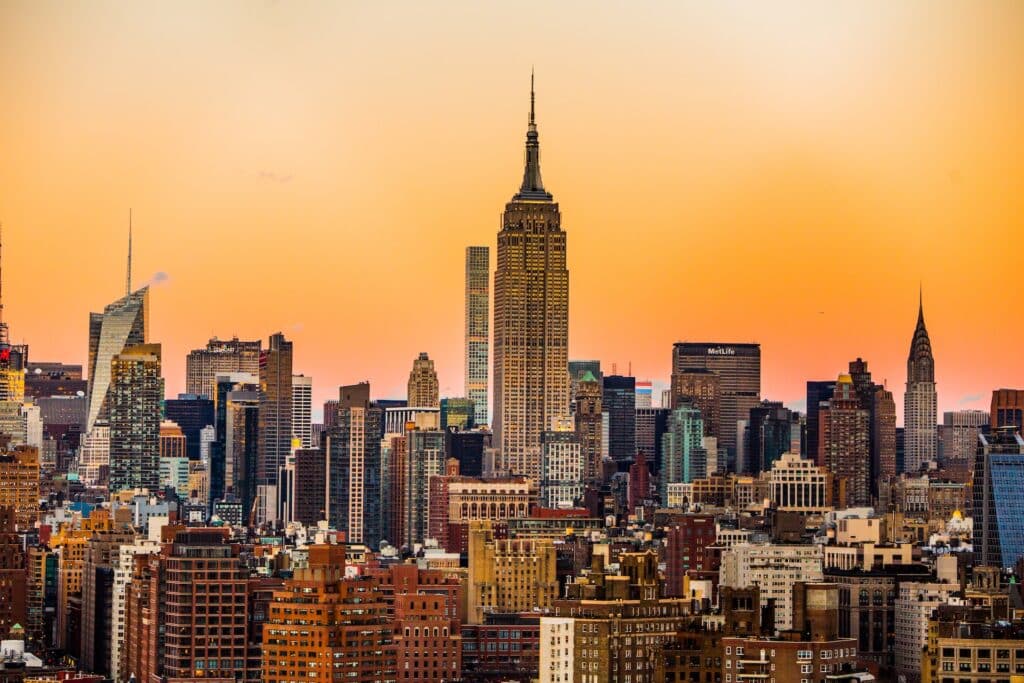
New York’s skyline is perhaps the most famous in the world, and for good reason.
A history of vertical ambition
In the early 20th century, Manhattan transformed into a vertical forest of skyscrapers. Immigrants arriving by ship would first spot the Statue of Liberty, and just behind her rose a jagged cityscape unlike anything they’d ever seen.
Iconic landmarks
From the Empire State Building and Chrysler Building to One World Trade Center, New York’s skyline has been immortalized in movies, TV shows, and postcards. Even if you’ve never visited, you’ve probably “seen” the city. It’s almost as though the skyscrapers become celebrities. When I first saw the skyline, what struck me most wasn’t the height; it was how familiar it already felt.
Symbol of opportunity
For generations, New York’s skyline has represented possibility. To stand on the Brooklyn Bridge and look out at Manhattan is to feel ambition in the air. For immigrants, that view often carries an extra layer of meaning: it’s proof that you’ve made it to a place where reinvention is possible.
Dubai: engineering the impossible
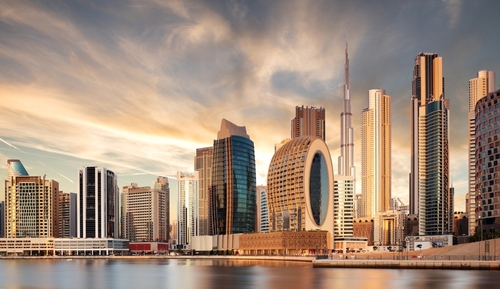
If New York is the old-school capital of skyscrapers, Dubai is the bold newcomer rewriting the rules.
From desert to global hub
Just a few decades ago, Dubai’s skyline was mostly sand and a handful of low-rise buildings. Today, it’s a futuristic forest of glass and steel. The city used bold architecture to transform itself into a global business and travel destination almost overnight.
At the center stands the Burj Khalifa, still the tallest building on Earth. But it’s far from alone; Dubai is packed with record-breaking towers and creative designs that look like they belong in science fiction.
Dubai’s next chapter in sustainability
Dubai now faces a new challenge: making its futuristic silhouette eco-friendly. The city is investing in projects that integrate renewable energy, smarter construction methods, and green architecture. From solar-powered skyscrapers to buildings designed with natural cooling systems, Dubai wants its skyline of tomorrow to be as responsible as it is dazzling.
Hong Kong: harmony between nature and steel
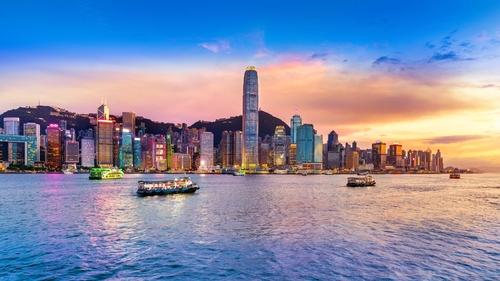
Hong Kong impresses with balance, nature, and skyscrapers side by side in breathtaking harmony.
A skyline shaped by nature
Victoria Harbour on one side, steep green mountains on the other, Hong Kong’s geography forces its skyline upward, creating one of the most dramatic backdrops in the world. The contrast of natural beauty and dense skyscrapers makes the city instantly recognizable and unforgettable.
Innovation and culture in the vertical city
With land so scarce, Hong Kong had to innovate. The city perfected high-rise living, packing homes, offices, and shops into vertical towers. And Hong Kong doesn’t just stop at practicality; the skyline itself becomes a performance during the Symphony of Lights. It’s a reminder that a skyline can be both functional and cultural.
London: where history meets modernity
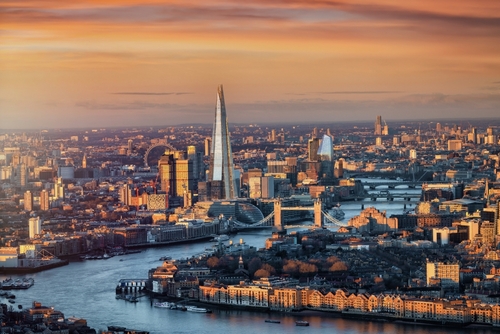
London’s skyline is a masterclass in blending the past and future. Few cities have pulled off this balance so gracefully.
Historical icons
London’s historic landmarks are more than just tourist attractions; they’re part of everyday life. Big Ben, Tower Bridge, and St. Paul’s Cathedral dominate the horizon as reminders of centuries of history.
London’s strict height restrictions and protected sightlines ensure landmarks like St. Paul’s remain front and center. Add the River Thames as a natural viewing corridor, and you get a skyline that feels curated rather than chaotic.
Modern structures
Alongside its history, London shows off its sleek, modern side. The Shard, The Gherkin, and the towers of Canary Wharf bring a bold confidence to the city’s silhouette, signaling London’s global role as a financial powerhouse and cultural hub.
Singapore: the garden city’s vertical evolution
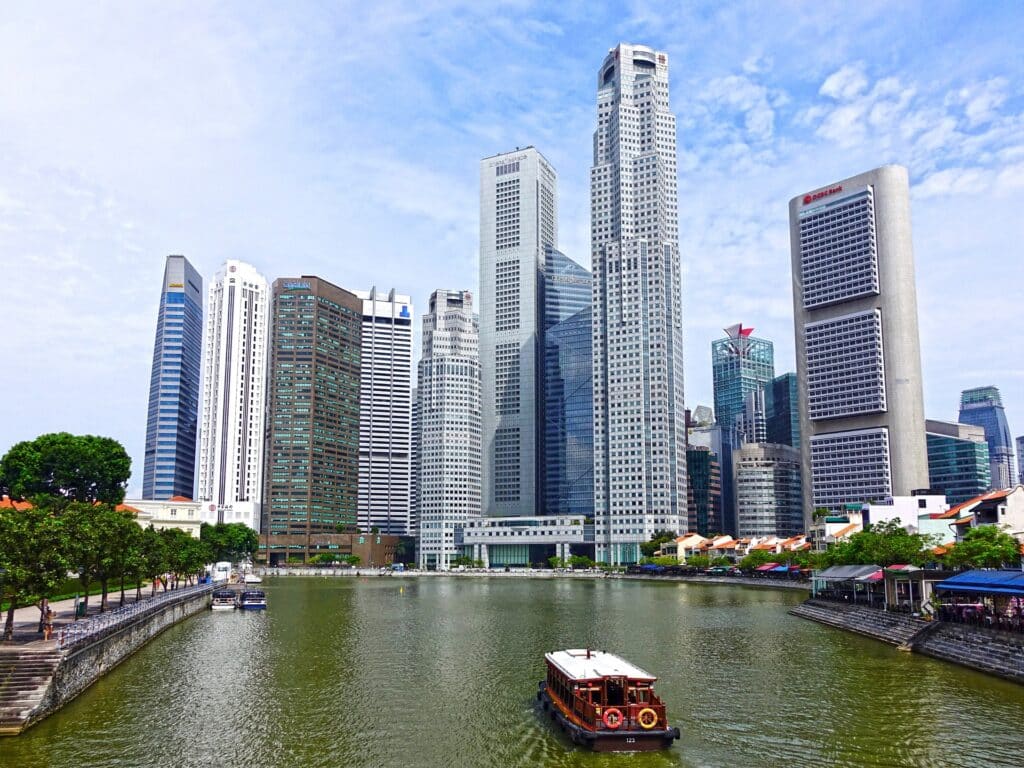
Singapore has redefined what a sustainable skyline can look like. Here, nature and architecture grow side by side.
Green architecture and iconic landmarks
In Singapore, green roofs, vertical gardens, and eco-conscious design aren’t exceptions; they’re the norm. The city treats sustainability as part of its identity, and the skyline proves it.
Marina Bay Sands, with its three towers and rooftop infinity pool, is one of the most photographed buildings in the world. Right next to it, Gardens by the Bay dazzles with its futuristic “Supertrees,” blending technology and greenery.
A model for the skyline of the future
Singapore is pioneering vertical farming and smart city technologies, showing how skyscrapers can be homes, workplaces, and ecosystems all at once. The city is proving that futuristic skylines don’t have to be wasteful; they can be sustainable by design. For immigrants, it’s inspiring to live in a place where eco-conscious living isn’t just a buzzword but something you can see.
Underrated skylines you should know
The big names get the spotlight, but some lesser-known skylines deserve recognition, too.
Toronto: North America’s rising skyline
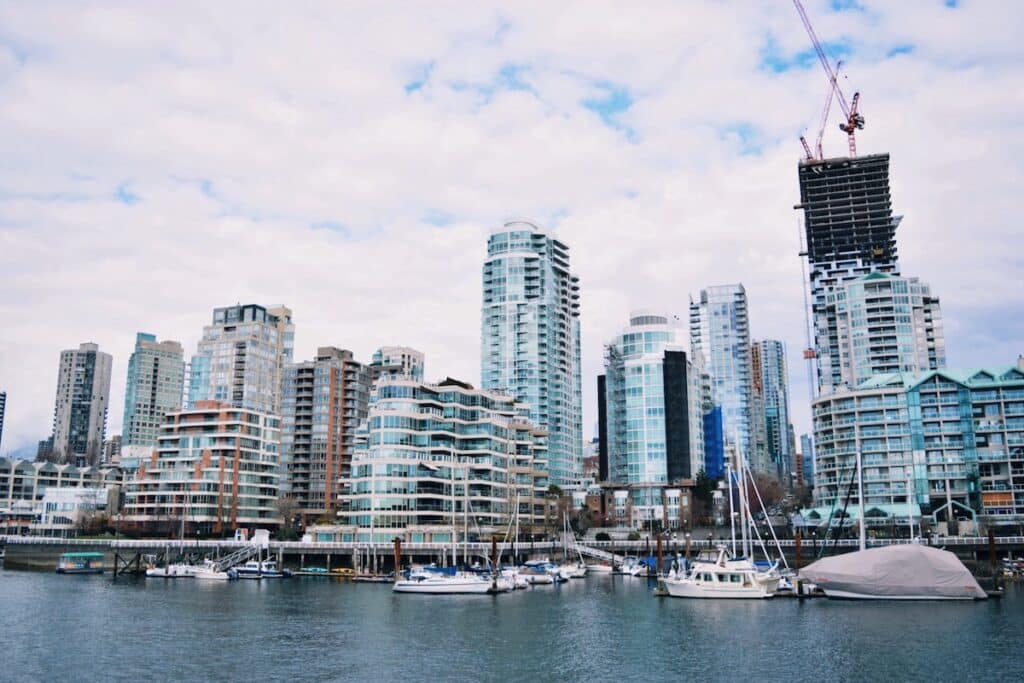
Toronto’s CN Tower once held the record as the tallest structure in the world, and it still defines the city. But the skyline is growing fast, reflecting Toronto’s rise as a financial hub and one of the most multicultural cities on Earth.
São Paulo: South America’s endless skyline
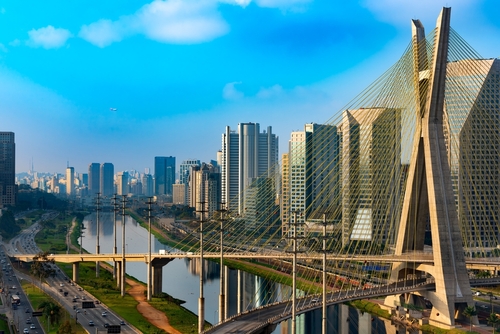
São Paulo doesn’t have one signature tower. Instead, the Brazilian city has thousands of high-rises stretching to the horizon. The sheer scale makes it one of the most overwhelming skylines on Earth. For newcomers, it’s both daunting and exciting, a city that never seems to end.
Kuala Lumpur: Southeast Asia’s twin peaks
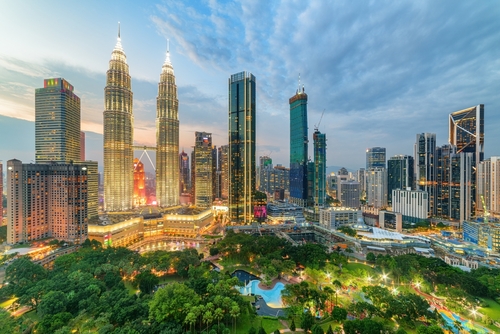
Kuala Lumpur may not have the tallest building anymore, but the Petronas Towers remain some of the most recognizable on Earth. Surrounded by a mix of colonial, Islamic, and modern architecture, the skyline reflects Malaysia’s diversity.
Frankfurt: Europe’s modern financial hub
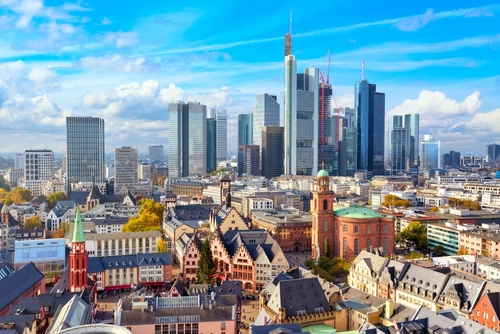
Unlike many European cities with low skylines, Frankfurt is known for its surprising cluster of skyscrapers. Nicknamed “Mainhattan” (a nod to the River Main and Manhattan), its towers stand out against Germany’s more traditional cityscapes. For immigrants and expats working in finance or tech, Frankfurt’s skyline represents opportunity and international connection in the heart of Europe.
How skylines are built for today and tomorrow
Skylines don’t appear by accident; they’re carefully shaped by rules, creativity, and now, cutting-edge technology. The horizons we admire today are also blueprints for the cities of tomorrow.
Urban planning and preservation
Many skylines look the way they do because of strict planning rules. Cities like Paris and London protect their historic silhouettes with laws that limit building height and preserve sightlines.
For example, no skyscraper can block the Eiffel Tower or St. Paul’s Cathedral. These policies ensure skylines remain instantly recognizable for generations.
Visionary architects and bold designs
Behind every iconic tower is an architect with a daring idea. Designers like Norman Foster and Zaha Hadid have reimagined skylines worldwide. Their work shows how a skyline is about both engineering and cultural expression.
Technology reshaping skylines
The skylines of tomorrow are being shaped by technology today. Skyscrapers are now equipped with smart systems that manage lighting, cooling, and energy use automatically. These features make tall buildings greener and more efficient, showing that modern skylines don’t have to come at the planet’s expense.
- Smart buildings: AI-driven systems reduce waste and improve comfort.
- Vertical living: Towers now include homes, gyms, offices, and schools all under one roof.
- Eco-materials: New construction uses recycled and low-carbon materials.
- Smart mobility: High-speed elevators and even drone landing pads are being designed for future towers.
The future of skylines
Looking ahead, skylines will reflect not just ambition but responsibility. Expect to see more carbon-neutral skyscrapers wrapped in greenery, powered by renewable energy, and designed with resilience in mind.
Coastal cities, in particular, are rethinking their skylines in response to rising sea levels, creating buildings that are tall enough to inspire but strong enough to withstand climate change. The future skyline is less about who can build the tallest tower, and more about who can build the smartest, most sustainable one.
FAQs
What makes a city skyline iconic?
It’s usually a mix of unique architecture, a memorable silhouette, and cultural significance. Geography plays a role too—think of Hong Kong’s mountains or Rio’s bay.
How do city planners balance development with history?
Many cities use zoning laws, height restrictions, and community input to protect historic landmarks. This keeps skylines recognizable for generations.
Which cities are developing new skylines?
Emerging cities like Nairobi, Kuala Lumpur, and Riyadh are building ambitious towers. Their skylines are transforming rapidly and attracting global attention.
What is the tallest skyline in the world?
Hong Kong is often ranked number one because of its sheer number of high-rises. Dubai, however, has the tallest individual building: the Burj Khalifa.
Which skyline is the oldest?
Rome and Athens have some of the world’s earliest recognizable skylines. Their historic monuments still define their horizons today.
